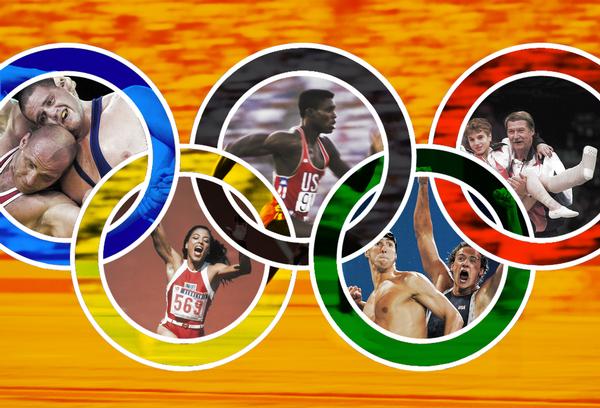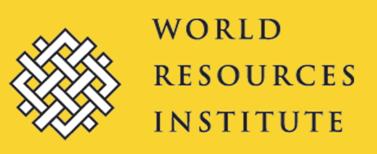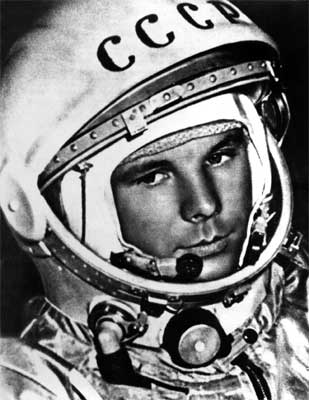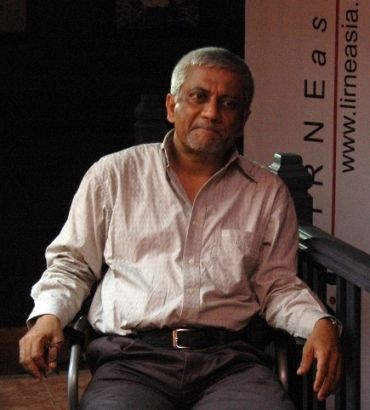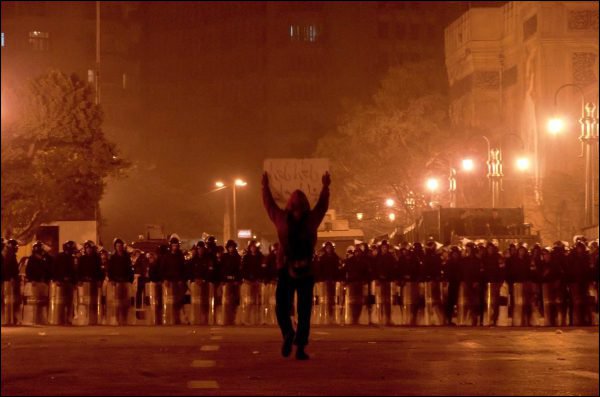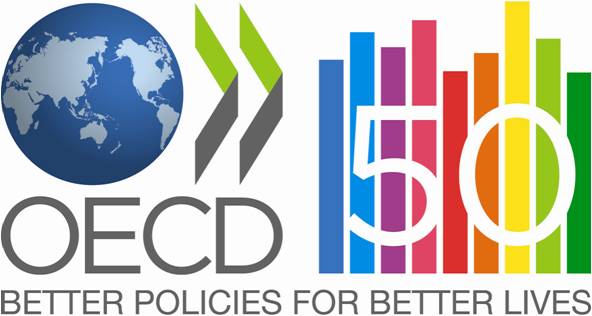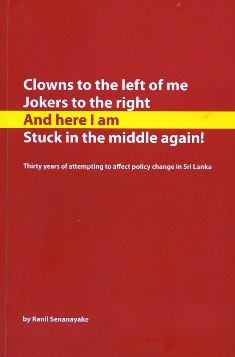
Last year, I read an uncommon book with an unusually long title written by an unorthodox author.
Clowns to the Left of Me, Jokers to the Right and Here I am Stuck in the Middle again: 30 years of attempting policy change in Sri Lanka was an author-published volume by systems ecologist Dr Ranil Senanayake. In it, he collected some of his more noteworthy media articles and non-technical writing on forestry, biodiversity, agriculture, conservation and the broader issues of sustainable development, published over three decades.
In his Epilogue, I came across one of the most chilling passages I read that year: “It has been commented that this nation twice removed from its gene pool the genes for activism. In 1971 the government ‘removed’ up to 20,000 or more of the educated. Those who attended university, demonstrated interest in radical politics, were young or unemployed were singled out for liquidation. The next programme was in the late 1980s when over 40,000 were ‘removed’ with hardly a word being uttered in protest on any international stage…These people never passed their genes on. Genetically speaking, we removed from our race a large percentage of the traits for high intellectual potential and activism. Metaphorically it has become the time of the bottom feeders to manifest themselves as intellectuals and leaders.”
I touched on this when I filmed a long interview with Ranil (now published on Groundviews.org: read Part 1 and Part 2). Here is the short video I edited, where his expressions match the gravity of his concerns:
Reproduced below is the full transcript of this short video (11 mins). My questions posed to him have been paraphrased on-screen; his spoken answers are verbatim.
You can debate Ranil’s views either on this blog, or on Groundviews where this video is also published.
Sri Lanka’s Lost Generations: Ranil Senanayake Speaks
An Eye for an Eye?
See, in 1971 and in the late 80s, when we heard these so called JVP revolution. We went out and we killed first 20,00 mass of men, more or less. And the second time, about 40,000. Young people, children of this country. Why? Because they were a threat to the established government of this country.
Now, I can see that if there is indeed a revolution, a country must respond. But responding in this brutal manner because the response was not merely a military response, it was a response of pure terrorism. It was terrorised the whole nation.
Collateral Damage?
One story that I can share with you is that a senior person who was involved in this, in the control, at a table made the statement that “If 10% of the people that we destroy were hardcore JVPers we would have broken the back of the revolution”. This totally horrified me. It, it…I was depressed for weeks when I heard that.
It meant 90% of those people they killed were innocent. Their only ‘crime’ was they were young, they were educated and they had the fire of youth in them.
I, as a person, said I could not live in a country that kills its own people — own children — for its survival and I left, I went away for sometime. I wrote a poem which Hon Lakshman Jayakody read into the Parliament, into the Hansard, pointing out where we were going wrong, in this case.
What Have We Done?
But worse, what that action brought was the REMOVAL from our gene pool of the genes for intellect, education. The genes for revolution. The genes that would drive people forward; the genes that produced people who would fight and die for a country, for a nation. We removed this and as from my genetics, as an geneticist, you remove 60,000 children from a population as small as ours, you are taking away a large ocean of the cleverest of our population. And we shot ourselves in the foot.
This is karma vipaka, as the Buddha says. For the action ghastly action, for the action of taking away of our youth, killing our youth, removing them from our gene pool, we will have to suffer the fate of having a gene pool, well, you see what we have today…
We ALL live with the consequences…
Unfortunately, there is something else, as a Sri Lankan and as a Buddhist, which I find loathsome and that is — when ever somebody dies for whatever reason even a murderer, it is our tradition to give a dana (alms giving). First, a week after they deceased, then a month and annually. We have lost 60,000 children for our own society, for maintaining our status quo. Has anyone EVER given a Dane to these people who have departed? Up to today, no!
So is it a surprise that as a nation we suffer what we suffer? We are responsible for that and yet uptodate we are not willing to accept the responsibility for the actions we did. I think that is something that we have to deal with. Sri Lankans will have to deal with in the future to come. Because, as Buddha says, karma vipaka — for every action there is a reaction. And for that action, look what we have today.
On Sri Lanka’s Separatist War…
The separatism that came after the youth insurrection was again something that was building up for sometime. It was the similar, shall we say almost parallel, political moment that happened in the North. Where the separatism when they were talking about it on a political platform then descended into a violent struggle, if you want to call it.
I think it was, it is still pointless, but I think what most people fail to realise is that it is rooted in our history. It’s rooted in 3,000 years of history. And that is why it is so difficult for us to deal with the subject of finding a common ground, to deal with the subject of extending our hands out, to deal with the subject of trying to understand the other position, because unfortunately we are still rooted in these many, many years, thousands of years of history.
Breaking Free of History’s Grip?
It is indeed, it should be the task of the leaders and the politicians to bring us into the modern age. To demonstrate that that history is past, that we have to now forge something into the future. That involves all of us.
But our shallow politicians have chosen otherwise, from both areas, from both sectors. They have chosen division as their power, division as their source of strength, because as I told you , because of the past history this is the easiest, this is the least common denominator — this is the easiest place to go to, it’s the shallowest political refuge.
And that’s what politicians from both sides have been doing. Not looking at the future, not working towards bringing us into the future but dragging us back into the past and opening up the old wounds and the old fears that we brought along with this for all these years and capitalising on them, from both sides.
Aren’t we ALL immigrants on the island of Lanka?
Indeed, you are absolutely right! Humanity has been wandering around this planet for thousands and thousands, tens of thousands of years. People have come and people have gone. I mean, this whole question of I came first or you came first is spurious at best, I mean, this is just the refuge of a cheap politician to say I came first, you came later, you came first, I came first, this is all ridiculous…
Prisoners of Our Fathers’ Hopes & Fears?
We are prisoners of our own constructs. Or, as the song goes, “We are indeed prisoners of our father’s hopes and fears.”
Fears. Fears is where the politicians move to. Fear is what they use as their tool of power. We are trapped in this thing and until that fear is removed, and until we are educated into understanding where we are, and we are educated into understanding that there is nothing lost, in treating another human being as equal and as a brother, we are lost.
We are a nation of people who claim to live by the words of the Buddha. If we do, this would never come about. Never. So it shows as a nation a loss, it shows as a nation, that we have failed to live up to what we claim we are – Buddhists…
Dr Ranil Senanayake
Interviewed by Nalaka Gunawardene
Colombo, Sri Lanka, on 19 March 2012
Released online: June 2012
Dr Ranil Senanayake Online profile
No copyright restriction.This video may be used by anyone, anywhere.
